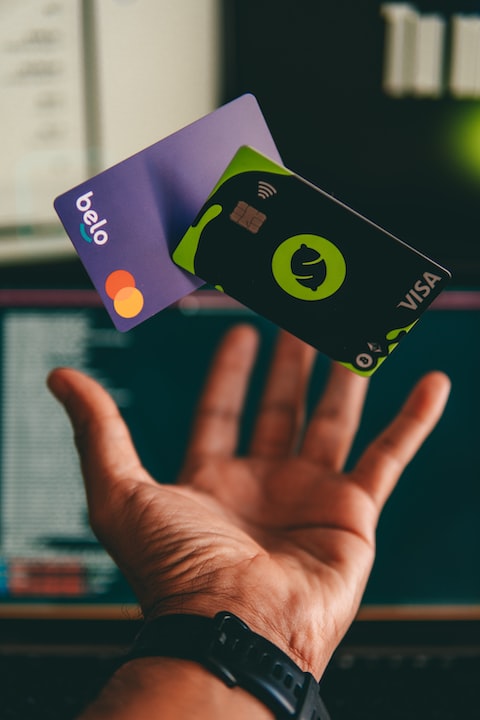
Direct attacks on computers usually target the operating system and other computer software. On the other hand, phishing relies solely on the vulnerability of the computer user, that is, using deception to steal access to information. Malware such as viruses, worms, and rootkits can cause computer damage or give identity thieves access to computers. Phishing, on the other hand, only seeks to steal identities.
But what is phishing? Phishing is a form of cybercrime in which a person poses as a legitimate institution over the telephone, email, or text message to lure targets into providing sensitive information such as personal information, banking, credit card details, and passwords. This information can then access accounts and lead to financial loss and identity theft.
Phishing is a type of social engineering where an attacker sends a fraudulent (e.g., spoofed, fake, or otherwise deceptive) message designed to trick a person into revealing sensitive information to the attacker or to deploy malicious software on the victim’s infrastructure like ransomware. Phishing attacks have become increasingly sophisticated and often transparently mirror the site being targeted, allowing the attacker to observe everything while the victim is navigating the site, and transverse any additional security boundaries with the victim. As of 2020, phishing is by far the most common attack performed by cybercriminals, with the FBI‘s Internet Crime Complaint Centre recording over twice as many incidents of phishing than any other type of computer crime.
https://en.wikipedia.org/wiki/Phishing

In the continuation of this article, we will explain what is phishing by mentioning an example:
In 2004, a Californian teenager was sued for phishing for creating an imitation of the website “America Online.” This fake website allowed him to gather sensitive information about users and access their credit card information to withdraw money from their accounts. There is also ‘vishing’ (voice phishing), ‘smishing’ (SMS phishing), and several other phishing techniques available to cybercriminals. Do not forget that phishing can easily deceive you!
What is phishing? What are the most happening?
In the following article, what is phishing, we will deal with Have you ever heard of Keystroke logging? Keylogging is the practice of covertly recording input signals into a computer from a keyboard so that the computer user is unaware. The difference between phishing and another computer attack is best illustrated by comparing it with keylogging. An individual who uses keylogging physically breaks into a computer to install software that records any user’s text, especially passwords and credit card numbers. In contrast, phishing emails may trick users into believing that their bank needs to verify their account login and password.
In the early days of widespread phishing, AOL was a primary target. Phishers asked members to verify their login and password by pretending to be AOL staff and using the company’s instant messaging system. As a result, the phisher could log in with this account and gain access to other account information (such as credit card numbers) or set up a spam e-mail base. Some people fell for the phishing, even after AOL inserted text warning that staff would never ask for account information. In addition, AOL opened its instant messaging program to users without an AOL account, making matters worse. In this way, phishers could target AOL subscribers while violating the company’s Terms of Service agreement.
As a result of AOL phishing, phishing has become common among banks, online businesses, and payment services. Companies like TD Ameritrade, eBay, and the U.S. Internal Revenue Service have all been targeted by phishers. Phishers usually use email for this technique, designing emails that look like they came from the company, except that they have a few differences, such as a letter addressed to “Dear Client” instead of the customer name, or the sender’s email address does not originate from the company’s domain.
Phishing always increases When there is a crisis!
To succeed with their phishing campaigns, criminals use deception and a sense of urgency. Crimes such as phishing can be increased when crises such as the Coronavirus pandemic occur.
A crisis puts people on edge. Their employers, the government, and other relevant authorities need to provide them with information and guidance. Those who receive emails that appear to come from one of these entities and promise new information or instruct recipients to complete a task quickly will be less likely to scrutinize them. Eventually, an impulsive click ends up infecting or compromising the victim’s account.
Mimecast discovered a phishing campaign that attempts to steal Microsoft OneDrive login credentials from the victim via the screen capture. Nowadays, sharing documents via OneDrive would become commonplace as more people work from home.
How to prevent phishing? Simple ways to avoid scamming!

In the following article, what is phishing, we will deal with using phishing-specific antivirus software can help you avoid being scammed. A computer can be protected from ever-evolving threats by upgrading its antivirus software. When e-mails arrive from a suspect source or contain phrases commonly used in phishing scams, antivirus software can block them. Additionally, antivirus software can alert users when they land on an unreliable Web site.
Remember that Companies with a good reputation will never ask for credit card numbers, account numbers, logins, or passwords from their customers. Be careful when clicking on links in emails, text messages, or instant messages that appear to be from a trusted source. Before clicking on the link, research them to determine if the site is legal.
A popup can easily capture personal information using Iframe technology and send it to a domain other than the one shown in the browser toolbar. Sites with a good reputation rarely ask for sensitive information in pop-ups. As a rule of thumb, no personal data should ever be entered in pop-ups even if they appear on a domain with an SSL certificate and have passed all other phishing checks.
Before entering important information (such as username and password) on any site, ensure that the site is secure. The easiest way to do this is to confirm that the site URL starts with HTTPS and a lock mark in the address bar. Some sites also have a trust mark to show their security. It warns you if a browser or antivirus detects a phishing site and blocks access to it. Unless you are 100% sure they are wrong, take these warnings seriously.
Developers are constantly trying to fix software security vulnerabilities by releasing new versions. Always keep your browser, operating system, and other applications up to date, and enable auto-updates if possible. Modern browsers have relatively strong phishing protection but installing an anti-phishing plugin lets you take your security to the next level.
How Do You Identify a Phishing Email?
Grammatical and punctuation errors.
Copywriters devote time and effort to creating emails with well-tested content, subject lines, and calls to action. A fraudulent email that contains poor grammar, improper punctuation, or is illogically organized is likely written by inexperienced scammers.
Requesting personal information.
You will never receive sensitive information from established brands via email. Any message that asks for personal information or banking/credit card information should be taken seriously.
Warnings and potential consequences abound in this alarming content.
Hackers can send you messages that threaten to cause anxiety, such as telling you that one of your accounts has been hacked, your account is about to expire, or that you may lose some of your benefits immediately, or any other extreme condition that puts you in panic. In such content, the user is typically driven to act right away by a sense of urgency and alarm.
Deadlines to meet.
This pattern involves hackers sending out emails regarding some upcoming deadline. A hacker may, for example, send out an email about a renewal insurance policy or a discount on a deal that might be of interest to the target. Usually, these emails lead the users to data harvesting sites where valuable personal and financial information can be stolen.
Offering large financial rewards.
Emails often claim you have won a lottery when you have never bought one, offer you a significant cash discount on something you have never purchased, offer you a large prize in a contest you have never entered, and so on. In reality, the scammers will usually direct you to a site where they can steal your personal or financial information.
In this article, I have tried to mention phishing attacks briefly and offer simple solutions to prevent victims of such attacks. What do you think? Have you ever had such an experience?







